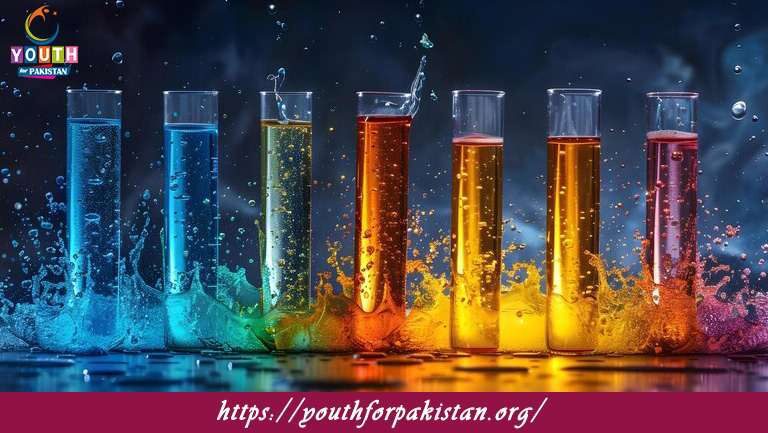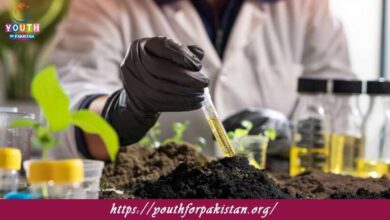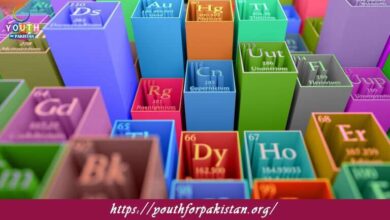9th Class Chemistry Chapter 8 MCQs with Answers

Unlock the principles of Chemical Reactivity with well-crafted 9th Class Chemistry Chapter 8 MCQs. Reaction type, factor affecting reactivity, and chemical equations have been focused at this post. Keywords like reactivity quiz and chemical reactions MCQs bring in the trending knowledge and increase visibility about learning. Answers and explanations make this collection ideal for exam preparation or to learn concepts. So, start your fascinating reactions that drive chemistry forward.
Which of the following is not a type of chemical reaction?
a) Precipitation reaction
b) Combustion reaction
c) Nuclear reaction
d) Neutralization reaction
What type of chemical reaction involves the exchange of ions between two compounds?
a) Combustion reaction
b) Redox reaction
c) Displacement reaction
d) Addition reaction
In a redox reaction, which species is being reduced?
a) Oxidizing agent
b) Reducing agent
c) Reactant
d) Product
The decomposition of a substance by an electric current is called:
a) Electrolysis
b) Precipitation
c) Sublimation
d) Neutralization
What type of chemical reaction is the reaction between an acid and a base?
a) Oxidation-reduction reaction
b) Neutralization reaction
c) Displacement reaction
d) Precipitation reaction
A + B → AB is the general equation for which type of chemical reaction?
a) Addition reaction
b) Decomposition reaction
c) Combination reaction
d) Displacement reaction
Which of the following is an example of an exothermic reaction?
a) Melting of ice
b) Boiling of water
c) Photosynthesis
d) Burning of wood
The rusting of iron is an example of which type of chemical reaction?
a) Combustion reaction
b) Displacement reaction
c) Decomposition reaction
d) Redox reaction
What type of chemical reaction involves the breakdown of a single compound into two or more simpler substances?
a) Combination reaction
b) Addition reaction
c) Decomposition reaction
d) Precipitation reaction
Which of the following factors can influence the rate of a chemical reaction?
a) Temperature
b) Color
c) Shape
d) Size
The substance that speeds up a chemical reaction without being consumed in the process is called a:
a) Catalyst
b) Reactant
c) Product
d) Inhibitor
Which of the following is an example of an endothermic reaction?
a) Freezing of water
b) Condensation of water vapor
c) Formation of clouds
d) Burning of paper
Which of the following is an example of a spontaneous chemical reaction?
a) Cooking food
b) Rusting of iron
c) Charging a battery
d) Melting ice
In a chemical equation, the number written in front of a chemical formula represents the:
a) Number of atoms in the molecule
b) Mass of the molecule
c) Number of moles of the substance
d) Number of molecules reacting or formed
What type of chemical reaction involves the transfer of electrons between reactants?
a) Combination reaction
b) Decomposition reaction
c) Redox reaction
d) Displacement reaction
Which of the following is a characteristic of an irreversible chemical reaction?
a) Reaching equilibrium
b) Producing a precipitate
c) Forming a gas
d) Proceeding in one direction only
Which of the following factors would decrease the rate of a chemical reaction?
a) Increased temperature
b) Increased concentration of reactants
c) Addition of a catalyst
d) Decreased surface area of reactants
The reaction 2H2O2 → 2H2O + O2 is an example of which type of reaction?
a) Addition reaction
b) Decomposition reaction
c) Displacement reaction
d) Combination reaction
Which of the following statements is true about exothermic reactions?
a) They absorb heat from the surroundings
b) They have a positive ΔH (enthalpy change)
c) They release energy to the surroundings
d) They occur spontaneously at low temperatures
The reaction A + BC → AC + B is an example of which type of chemical reaction?
a) Displacement reaction
b) Combination reaction
c) Decomposition reaction
d) Double displacement reaction
What is the process by which plants convert carbon dioxide and water into glucose and oxygen using sunlight?
a) Combustion
b) Photosynthesis
c) Respiration
d) Fermentation
Which of the following is a reducing agent in a redox reaction?
a) A substance that gains electrons
b) A substance that loses electrons
c) A substance that remains unchanged
d) A catalyst
The reaction CH4 + 2O2 → CO2 + 2H2O represents which type of chemical reaction?
a) Combination reaction
b) Displacement reaction
c) Decomposition reaction
d) Combustion reaction
What is the term used to describe a chemical reaction that absorbs heat from the surroundings?
a) Endothermic reaction
b) Exothermic reaction
c) Spontaneous reaction
d) Reversible reaction
The reaction 2Na + Cl2 → 2NaCl is an example of which type of chemical reaction?
a) Decomposition reaction
b) Combination reaction
c) Displacement reaction
d) Redox reaction
Which of the following is a sign of a chemical reaction taking place?
a) Change in temperature
b) Change in color
c) Formation of a precipitate
d) All of the above
The reaction N2 + 3H2 → 2NH3 is an example of which type of chemical reaction?
a) Combination reaction
b) Displacement reaction
c) Decomposition reaction
d) Ammonification reaction
Which of the following statements is true about exergonic reactions?
a) They require an input of energy to proceed
b) They release energy to the surroundings
c) They have a negative ΔG (Gibbs free energy change)
d) They are non-spontaneous
The reaction AB → A + B is an example of which type of chemical reaction?
a) Displacement reaction
b) Combination reaction
c) Decomposition reaction
d) Double displacement reaction
Which of the following factors would increase the rate of a chemical reaction?
a) Decreased temperature
b) Increased concentration of reactants
c) Addition of an inhibitor
d) Decreased pressure
The reaction 2Fe + 3Cl2 → 2FeCl3 is an example of which type of chemical reaction?
a) Combination reaction
b) Displacement reaction
c) Decomposition reaction
d) Redox reaction
Which of the following is an example of a single displacement reaction?
a) 2H2O → 2H2 + O2
b) AgNO3 + NaCl → AgCl + NaNO3
c) CH4 + 2O2 → CO2 + 2H2O
d) C6H12O6 + 6O2 → 6CO2 + 6H2O
The reaction C6H12O6 → 2C2H5OH + 2CO2 is an example of which type of chemical reaction?
a) Combination reaction
b) Displacement reaction
c) Decomposition reaction
d) Fermentation reaction
Which of the following statements is true about catalysts?
a) They increase the activation energy of a reaction
b) They slow down the rate of a reaction
c) They are consumed in the reaction
d) They lower the activation energy of a reaction
The reaction 2KClO3 → 2KCl + 3O2 is an example of which type of chemical reaction?
a) Combination reaction
b) Displacement reaction
c) Decomposition reaction
d) Redox reaction
Which of the following is a characteristic of a reversible chemical reaction?
a) Forming a precipitate
b) Releasing heat to the surroundings
c) Proceeding in one direction only
d) Reaching equilibrium
The reaction 2H2 + O2 → 2H2O is an example of which type of chemical reaction?
a) Combination reaction
b) Displacement reaction
c) Decomposition reaction
d) Combustion reaction
What type of chemical reaction involves the reaction between an acid and a carbonate compound?
a) Combustion reaction
b) Neutralization reaction
c) Decomposition reaction
d) Redox reaction
The reaction 2H2O → 2H2 + O2 is an example of which type of chemical reaction?
a) Combination reaction
b) Displacement reaction
c) Decomposition reaction
d) Combustion reaction
Which of the following statements is true about spontaneous reactions?
a) They always proceed quickly
b) They require an input of energy to proceed
c) They have a positive ΔG (Gibbs free energy change)
d) They occur without external intervention
The reaction 2H2O2 → 2H2O + O2 is an example of which type of reaction?
a) Combination reaction
b) Decomposition reaction
c) Displacement reaction
d) Redox reaction
What is the term used to describe a reaction that releases heat to the surroundings?
a) Exothermic reaction
b) Endothermic reaction
c) Spontaneous reaction
d) Irreversible reaction
The reaction H2CO3 → H2O + CO2 is an example of which type of chemical reaction?
a) Combination reaction
b) Displacement reaction
c) Decomposition reaction
d) Hydrolysis reaction
Which of the following factors would not affect the rate of a chemical reaction?
a) Temperature
b) Catalyst
c) Pressure
d) Concentration of reactants
The reaction 2H2 + O2 → 2H2O is an example of which type of chemical reaction?
a) Combination reaction
b) Displacement reaction
c) Decomposition reaction
d) Combustion reaction
Which of the following is an example of a double displacement reaction?
a) 2H2O → 2H2 + O2
b) 2NaOH + H2SO4 → Na2SO4 + 2H2O
c) CH4 + 2O2 → CO2 + 2H2O
d) C6H12O6 + 6O2 → 6CO2 + 6H2O
The reaction 2H2O2 → 2H2O + O2 is an example of which type of chemical reaction?
a) Combination reaction
b) Decomposition reaction
c) Displacement reaction
d) Redox reaction
Which of the following statements is true about reversible reactions?
a) They reach equilibrium and proceed in both directions
b) They have a positive ΔH (enthalpy change)
c) They occur spontaneously at low temperatures
d) They are irreversible once they reach equilibrium
The reaction C6H12O6 → 2C2H5OH + 2CO2 is an example of which type of chemical reaction?
a) Combination reaction
b) Displacement reaction
c) Decomposition reaction
d) Fermentation reaction
Which of the following is a characteristic of an exergonic reaction?
a) They have a positive ΔG (Gibbs free energy change)
b) They require an input of energy to proceed
c) They release energy to the surroundings
d) They are non-spontaneous
The reaction 2KClO3 → 2KCl + 3O2 is an example of which type of chemical reaction?
a) Combination reaction
b) Displacement reaction
c) Decomposition reaction
d) Redox reaction
What type of chemical reaction involves the reaction between an acid and a carbonate compound?
a) Combustion reaction
b) Neutralization reaction
c) Decomposition reaction
d) Redox reaction
The reaction 2H2O → 2H2 + O2 is an example of which type of chemical reaction?
a) Combination reaction
b) Displacement reaction
c) Decomposition reaction
d) Combustion reaction
Which of the following statements is true about spontaneous reactions?
a) They always proceed quickly
b) They require an input of energy to proceed
c) They have a positive ΔG (Gibbs free energy change)
d) They occur without external intervention
The reaction 2H2 + O2 → 2H2O is an example of which type of chemical reaction?
a) Combination reaction
b) Displacement reaction
c) Decomposition reaction
d) Combustion reaction
What type of chemical reaction involves the reaction between an acid and a carbonate compound?
a) Combustion reaction
b) Neutralization reaction
c) Decomposition reaction
d) Redox reaction
The reaction 2H2O → 2H2 + O2 is an example of which type of chemical reaction?
a) Combination reaction
b) Displacement reaction
c) Decomposition reaction
d) Combustion reaction
Which of the following statements is true about spontaneous reactions?
a) They always proceed quickly
b) They require an input of energy to proceed
c) They have a positive ΔG (Gibbs free energy change)
d) They occur without external intervention
The reaction 2H2 + O2 → 2H2O is an example of which type of chemical reaction?
a) Combination reaction
b) Displacement reaction
c) Decomposition reaction
d) Combustion reaction
What type of chemical reaction involves the reaction between an acid and a carbonate compound?
a) Combustion reaction
b) Neutralization reaction
c) Decomposition reaction
d) Redox reaction
If you are interested to enhance your knowledge regarding Physics, Chemistry, Biology, and Computer please click on the link of each category, you will be redirected to dedicated website for each category.





